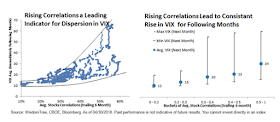Political shocks have market consequences. An examination of current financial markets against simple trend and momentum indicators suggests that the trading around the Italian political news was not pretty for systematic trend-followers. In the US bond markets, prices have rallied through 20, 40, and 80-day moving averages in just a few trading dates. This same pattern can be seen in Europe. Short-term rate changes like the Fed Funds and Eurodollars futures one year out have shown an even more exaggerated pattern on a relative basis.
What has the Italian government uncertainty done in the last ten trading days:
- It reversed the major themes in financial markets.
- It was a shock and not anticipated by markets
- It created a global contagion regardless of what some may have said by many pundits.
- It is not a crisis, but has generated an adjustment in expectations.
- The price impact has shows an over-reaction with some reversal as expected with events generating high uncertainty which have not been resolved but pushed forward.
- It is expected to have a longer-lasting effect as measured by one-year Eurodollar and Fed funds.
This is a classic non-countable, non-measurable event that will harm trend-following managers which focus on measurable, countable, and repeatable events that evolve over time. Systematic funds were caught wrong-footed as measured by the reaction in '40 Act fund performance which provides daily return information. A representative sample shows similar return pattern for the month of May. Gains from trends earlier in the month were reversed in the last two weeks as financial markets rallied on fear and a flight to quality.
What can investors do? The only viable option is style and time diversification. Shorter-term traders may have been able to exploit the reversal. Non-Trend style investors were less impacted by the shock, albeit there was enough spread dislocation to hurt all but the most prescient traders.





































